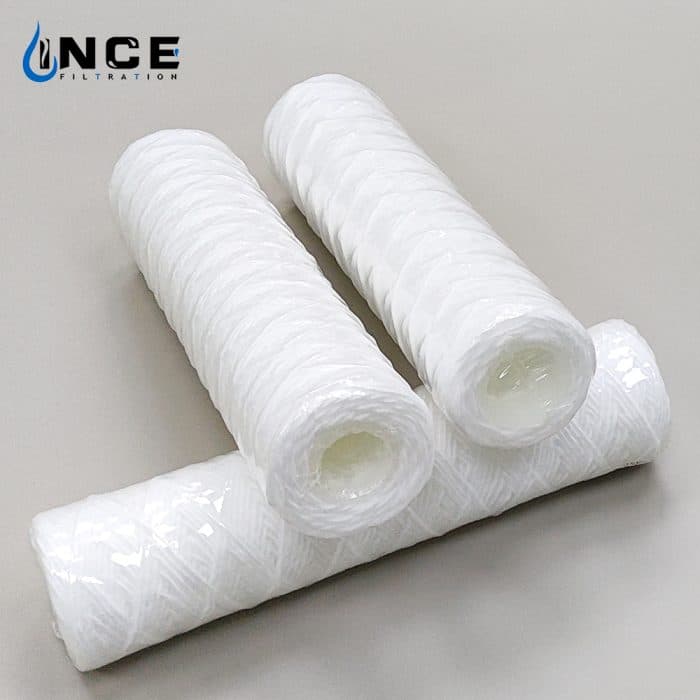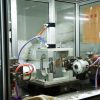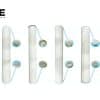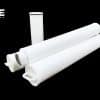Optimizing Liquid Filter Cartridge Selection for Your Application

In industries where the purity and quality of liquids are critical, choosing the right liquid filter cartridge is a pivotal decision. Whether you’re working in food and beverage, water treatment, or chemical processing, selecting the appropriate liquid filter cartridge size is crucial to maintain operational efficiency, ensure effective filtration, and reduce maintenance costs. In this guide, we’ll explore how to select the optimal filter cartridge size based on various factors and provide you with actionable insights to make informed purchasing decisions.
Understanding the Importance of Cartridge Size
The size of a liquid filter cartridge directly affects its filtration capacity, flow rate, and maintenance requirements. Cartridge filters, available in sizes ranging from 10” to 40”, are cylindrical filters made from materials such as polypropylene or polyester, designed to remove contaminants from liquids. The size of the filter cartridge not only determines how much liquid it can handle but also influences the filter’s performance, including its dirt-holding capacity and the ease of maintenance.
When selecting a filter cartridge, one of the most critical aspects to consider is the pore size, which is measured in microns. The pore size dictates the size of particles that the filter can trap. For instance, a 10-micron cartridge can filter out particles as small as 10 microns, which is significantly finer than a typical sediment filter used in residential systems.
Key Factors for Selecting the Right Cartridge Size
- Flow Rate and Pressure Drop
The flow rate of the liquid, which is typically measured in gallons per minute (GPM), directly impacts the size of the cartridge needed. If your application requires a high flow rate, you’ll need a larger filter cartridge to accommodate the volume of liquid without causing a pressure drop. Larger cartridges, such as 40-inch filters, are ideal for high-flow applications because they provide more surface area for filtration.
However, as the pore size decreases to trap finer particles, the pressure drop across the filter increases, which may lead to a need for multiple cartridges to achieve the desired flow rate without compromising performance. For example, a 10-micron filter with a flow rate of 6.6 GPM may experience a pressure drop of 0.73 PSI, which rises to 1 PSI at 8.8 GPM. To maintain optimal performance, select a filter that has a flow rate capacity at least 25% higher than your operational requirement.
- Particle Size and Contaminant Load
Micron size is one of the most critical factors in choosing a liquid filter cartridge. Filter cartridges are available in a wide range of micron ratings, from less than 1 micron for ultra-fine filtration to 200 microns for coarse filtration. If your application involves removing large debris, a higher micron filter would suffice, whereas pharmaceutical or beverage applications often require filters with pore sizes of 5 microns or smaller.
Additionally, different filters, such as pleated, melt-blown, or string-wound filters, offer various dirt-holding capacities and levels of filtration efficiency. Melt-blown cartridges, for instance, are excellent for removing contaminants uniformly across different micron sizes and are widely used in water treatment and food processing.
- Chemical Compatibility and Temperature Tolerance
The material of the filter cartridge plays an essential role, particularly when dealing with corrosive chemicals or high-temperature liquids. Polypropylene is a popular choice for its resistance to many chemicals, making it ideal for oil and chemical filtration. In contrast, polyester cartridges offer broader chemical compatibility, especially in applications involving acids or solvents.
High-temperature applications, such as in oil and gas or steam filtration, require cartridges made from materials like stainless steel, which can withstand harsh environments and high temperatures without degrading.
- Maintenance and Cost Efficiency
While larger filter cartridges offer the benefit of less frequent maintenance due to their higher dirt-holding capacity, they also come at a higher initial cost. However, investing in a filter with a higher dirt-loading capacity or a longer lifecycle can reduce downtime, labor costs, and overall operational costs. Using a larger or more advanced filter design may be more cost-effective in the long run, despite the initial price difference.
For example, a pleated filter with a higher surface area will last longer than a standard filter because it holds more dirt, reducing the frequency of replacements. These pleated filters are available in both economy and premium grades, depending on your filtration needs and budget.
Maximizing Filtration Efficiency
To maximize the efficiency of your liquid filtration system, ensure that your filter cartridge size is properly matched to your application’s requirements. Here’s a checklist to help guide your decision:
- Identify the flow rate needed for your operation and choose a filter that can handle at least 25% more to prevent pressure drops.
- Evaluate the contaminant size and select the appropriate micron rating. Use finer filters (under 10 microns) for sensitive applications like beverage or pharmaceutical filtration.
- Consider chemical compatibility and ensure that the filter material can withstand the chemicals or solvents in your process.
- Factor in lifecycle costs. While larger, high-capacity filters may have higher upfront costs, they often reduce operational costs over time by decreasing maintenance and replacement frequency.
Conclusion
Selecting the right liquid filter cartridge size is vital for maintaining the performance and efficiency of your filtration system. By carefully considering factors such as flow rate, micron size, chemical compatibility, and maintenance requirements, you can choose a filter that not only meets your immediate filtration needs but also enhances long-term operational efficiency. Whether you’re filtering water, chemicals, or food and beverages, the right filter cartridge can reduce downtime, cut costs, and ensure the purity and quality of your final product.



